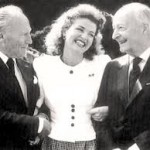By: Frank Cadenhead
There is an ongoing protest movement called Nuit Debout in Paris and in other cities around France. Like “Occupy Wall Street” is is mainly frustrated young people. The name “Nuit debout” has been translated into English as “Up All Night”, “Standing Night”, or “Rise up at night.” Young people in the thousands gather in Paris at the Place de la République each night since the movement began on March 31.
It was an immediate response to a proposed modification to France’s labor laws which would make it easier for employers to fire employees, a difficult process and a problem for prospective new business in France. The government’s proposal immediately was opposed by labor unions and other left politicians and groups. Protesters with a variety of other social issues immediately joined the movement. The street protests, which have sometimes turned violent, has lead to this permanent nighttime occupation of one of the most important junctions in Paris.
A young oboist, Clément Lafargue, had an idea for musicians to gather to play Dvorak’s Symphony No. 9, “From the New World,” as an act of hope. The call went out on social media and on the designated night, April 21, some 350 musicians, both professional and amateur, showed up. After only a couple of hours of rehearsal, the symphony was played. A Youtube sample shows that enthusiasm can trump detail:
The 2011 “Occupy Wall Street” movement made a global impact and movements began in European countries. It did not have much impact in France because of the election of a new Socialist government under President François Hollande created the expectation that the economy and social justice would flourish. Since then, however, with the economy of France flatlined and disappointment with Hollande at the maximum, young people are again at the barricades.
With the disappearance of Occupy Wall Street, my own country’s establishment assumed that the protest and the dissatisfaction of young people was over. This understanding is only a hint of how seriously out of touch with the people “those in the know” were. This complete failure can be seen as alarming and is most clearly demonstrated in recent clueless party politics; clueless to the feelings of both Democrats and Republicans who vote with the resulting “outsider” candidates making the biggest impact so far.
![Taiwan_NSO_1[1]](http://www.musicalamerica.com/mablogs/wp-content/uploads/2013/11/Taiwan_NSO_11-150x150.jpg)
